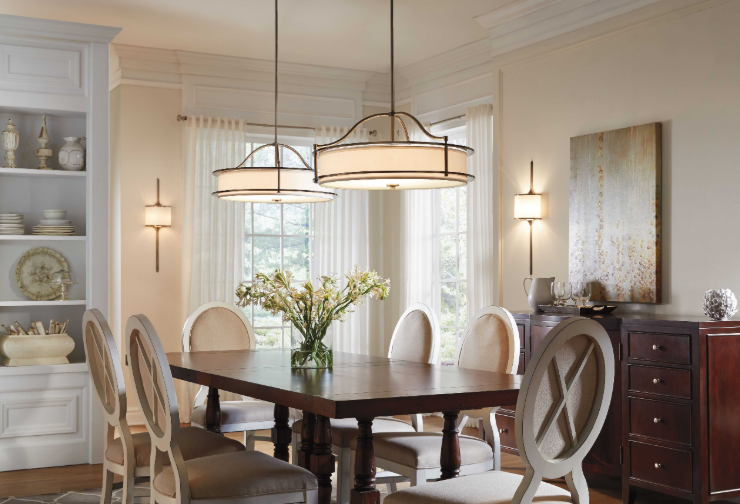
The Dos and Don’ts of Installing Lighting Fixtures at Home
Lighting isn’t just about making your home brighter—it’s about setting the mood, increasing functionality, and enhancing your overall interior design. But installing lighting fixtures can be a bit more complicated than simply screwing in a bulb or flipping a switch. Done wrong, it can lead to costly repairs—or even safety hazards. That’s why knowing what to do (and what to avoid) when installing lighting fixtures at home is so important.
Whether you’re refreshing a single room or upgrading your whole home, here’s a clear guide to the dos and don’ts of lighting fixture installation, brought to you by the professionals at Shock Solutions LLC.
✅ The Dos of Lighting Fixture Installation
1. Do Plan Ahead
Before buying or installing anything, think about the purpose of the light fixture and how it fits into your space. Are you lighting up a kitchen for task use? Adding ambiance to a bedroom? Or making a hallway feel more open and inviting?
Tips:
-
Map out the space and where fixtures will be placed.
-
Consider ceiling height, furniture layout, and electrical wiring access.
-
Think about bulb type and wattage requirements.
2. Do Turn Off the Power
It might seem obvious, but you’d be surprised how many people forget this simple safety step. Always shut off the power at the circuit breaker before you start working with electrical wiring.
Pro Tip: After flipping the breaker, use a voltage tester to double-check that the power is off.
3. Do Use the Right Tools and Materials
You don’t need to be a licensed electrician to do basic installations, but you do need the proper tools. Some must-haves:
-
Voltage tester
-
Screwdrivers
-
Wire cutters and strippers
-
Ladder
-
Mounting bracket (usually comes with the fixture)
-
Wire nuts and electrical tape
If you’re missing something, it’s better to pause and get the right tools than risk a poor or unsafe installation.
4. Do Choose Fixtures That Match the Room’s Style
Lighting fixtures can instantly elevate a space—if they’re chosen thoughtfully. Match your fixtures with the room’s design and function.
For example:
-
Pendant lights work beautifully over kitchen islands or dining tables.
-
Flush mounts are great for rooms with low ceilings.
-
Chandeliers add elegance to foyers or dining rooms.
-
Wall sconces provide cozy ambient lighting for bedrooms or hallways.
Shock Solutions LLC recommends opting for energy-efficient LED fixtures when possible—they save money and last longer!
5. Do Follow Manufacturer Instructions
Every fixture is different, and the instructions provided by the manufacturer exist for a reason. Even if you’ve installed lighting before, don’t assume this one is the same. Read the directions thoroughly and follow them step-by-step.
❌ The Don’ts of Lighting Fixture Installation
1. Don’t Work with Live Wires
This might be the biggest “don’t” of all. Never, ever touch or attempt to connect wires while the power is still on. It’s dangerous and potentially fatal. If you’re not sure if a wire is live—assume it is until proven otherwise with a tester.
2. Don’t Overload the Circuit
Each circuit in your home can only handle a certain amount of electrical load. Adding too many high-wattage lights to a single circuit could trip breakers—or worse, cause a fire.
If you’re not familiar with load limits, Shock Solutions LLC recommends consulting a licensed electrician to evaluate your current setup before you install additional fixtures.
3. Don’t Install Fixtures That Are Too Big (or Too Small)
Size matters—especially when it comes to lighting fixtures. An oversized chandelier in a small room will overpower the space, while a tiny flush mount in a large living room might look awkward or underwhelming.
General rule of thumb:
Add the length and width of your room (in feet) to get the ideal diameter (in inches) for your fixture. For example, a 10×10 room = 20 inches.
4. Don’t Ignore Ceiling Height
When installing hanging fixtures like chandeliers or pendant lights, consider how low the light will hang.
Suggested minimum clearances:
-
7 feet from floor to bottom of fixture in areas with foot traffic.
-
30-36 inches above dining tables or kitchen islands.
Low-hanging lights in high-traffic areas can quickly become a headache—literally.
5. Don’t Be Afraid to Call a Pro
If you’re unsure about wiring, working with heavy fixtures, or installing in tricky spots like bathrooms or outdoor areas, call in the pros. Licensed electricians like those at Shock Solutions LLC ensure your installation is done right—and up to code.
Electrical mistakes can lead to:
-
Short circuits
-
Shock hazards
-
Fires
-
Voided home insurance
It’s not worth the risk.
Bonus Tips from Shock Solutions LLC
Here are some insider tips from the seasoned experts at Shock Solutions LLC to help your project go smoother:
✔ Use Smart Bulbs or Dimmers
Adding dimmers or smart lighting options gives you more control over brightness and energy use—and helps create the perfect ambiance.
✔ Double-Check the Mounting
Make sure your electrical box is securely fastened to the ceiling or wall. Wobbly boxes can lead to shaky or unsafe installations.
✔ Test the Fixture Before Final Assembly
Once everything is wired and connected, test the light before you fully screw in the fixture or put the cover on. It saves you time if something needs adjustment.
When Should You Hire a Professional?
Here are a few scenarios when it’s best to call in the experts at Shock Solutions LLC:
-
You’re upgrading an old electrical system.
-
You’re dealing with aluminum wiring (common in older homes).
-
Your fixture requires complex installation (e.g., fan + light combos).
-
You want to install outdoor lighting or bathroom lighting (where moisture adds risk).
-
You’ve got no idea what you’re doing.
Hiring a licensed electrician ensures your installation is safe, compliant, and looks great.
Final Thoughts
Lighting can completely transform the look, feel, and functionality of your home—but only if it’s done safely and correctly. By following these dos and don’ts, you can take on your own lighting installation project with confidence.
Remember: safety always comes first. When in doubt, call the experts at Shock Solutions LLC. They’ll make sure your new fixtures are not only beautiful but also installed to meet all safety and code standards.
Whether you’re swapping out old ceiling lights or installing smart lighting throughout your home, careful planning and proper installation go a long way in creating a space that’s both bright and beautiful.
FAQs: Lighting Fixture Installation
Q1. Do I need a permit to install a new lighting fixture in my home?
In most cases, swapping out existing fixtures doesn’t require a permit. However, if you’re installing new wiring or adding a fixture in a new location, your local building codes may require one. When in doubt, consult with a licensed contractor or electrician like Shock Solutions LLC.
Q2. How long does it take to install a light fixture?
Basic installations usually take between 30 minutes to 2 hours, depending on complexity. Replacing an existing fixture is quicker than adding a completely new one with wiring. If the installation is more complex or involves structural changes, it could take longer.
Q3. Can I install a ceiling light fixture by myself, or should I hire a professional?
If you’re comfortable with basic electrical work, swapping out a ceiling fixture is manageable. However, if you’re dealing with heavy chandeliers, outdated wiring, or unfamiliar setups, it’s best to hire professionals like Shock Solutions LLC for safe, reliable installation.



